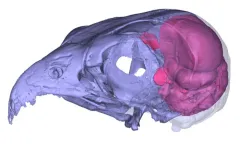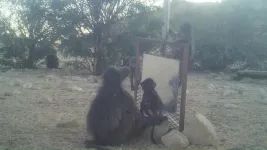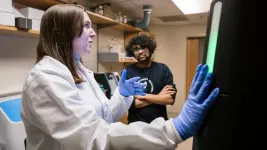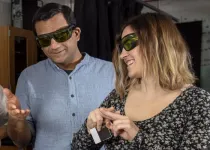(Press-News.org) An English literature graduate turned data scientist has developed a new method for large language models (LLMs) used by AI chatbots to understand and analyse small chunks of text, such as those on social media profiles, in customer responses online or for understanding online posts responding to disaster events.
In today’s digital world, such use of short text has become central to online communication. However, analysing these snippets is challenging because they often lack shared words or context. This lack of context makes it difficult for AI to find patterns or group similar texts.
The new research addresses the problem by using large language models (LLMs) to group large datasets of short text into clusters. These clusters condense potentially millions of tweets or comments into easy-to-understand groups generated by the model.
PhD student Justin Miller has developed this method for use by AI programs that successfully produced coherent categories after analysing nearly 40,000 Twitter (X) user biographies from accounts tweeting about US President Donald Trump over two days in September 2020.
The language model developed by Mr Miller, an English literature graduate, clustered the biographies into 10 categories, and allocated scores within each of these categories to assist in analysing the likely occupation of the tweeters, their political leaning, or even their use of emojis.
The study is published in the Royal Society Open Science journal.
Mr Miller said: “What makes this study stand out is its focus on human-centred design. The clusters created by the large language models are not only computationally effective but also make sense to people.
“For instance, texts about family, work, or politics are grouped in ways that humans can intuitively name and understand. Furthermore, the research shows that generative AI, such as ChatGPT, can mimic how humans interpret these clusters.
“In some cases, the AI provided clearer and more consistent cluster names than human reviewers, particularly when distinguishing meaningful patterns from background noise.”
Mr Miller, a doctoral candidate in the School of Physics and a member of the Computational Social Sciences lab, said the tool he has developed could be used to simplify large datasets, gain insights for decision making and improve search and organisation.
Using large language models (LLMs), the authors created clusters using a methodology known as “Gaussian mixture modelling” that capture the essence of the text and are easier for humans to understand. They validated these clusters by comparing human interpretations with those from a generative LLM, which closely matched human reviews.
This approach not only improved clustering quality but also suggests that human reviews, while valuable, might not be the only standard for cluster validation.
Mr Miller said: “Large datasets, which would be impossible to manually read, can be reduced into meaningful, manageable groups.”
Applications include:
Simplifying Large Datasets: Large datasets, which would be impossible to manually read, can be reduced into meaningful, manageable groups. For example, Mr Miller applied the same methods from this paper to another project on the Russia-Ukraine war. By clustering over 1 million social media posts, he identified 10 distinct topics, including Russian disinformation campaigns, the use of animals as symbols in humanitarian relief, and Azerbaijan’s attempts to showcase its support for Ukraine.
Gain Insights for Decision-Making: Clusters provide actionable insights for organisations, governments and businesses. A business might use clustering to identify what customers like or dislike about their product, while governments could use it to condense wide ranging public sentiment into a few topics.
Improve Search and Organisation: For platforms handling large volumes of user-generated content, clustering makes it easier to organise, filter and retrieve relevant information. This method can help users quickly find what they’re looking for and improve overall content management.
Mr Miller said: “This dual use of AI for clustering and interpretation opens up significant possibilities. By reducing reliance on costly and subjective human reviews, it offers a scalable way to make sense of massive amounts of text data. From social media trend analysis to crisis monitoring or customer insights, this approach combines machine efficiency with human understanding to organise and explain data effectively.”
-ENDS-
Interviews
Justin Miller | justin.k.miller@sydney.edu.au
Media enquiries
Marcus Strom | marcus.strom@sydney.edu.au | +61 474 269 459
Research
Miller, J. and Alexander, T. ‘Human-interpretable clustering of short text using large language models’ (Royal Society Open Science 2025) DOI: 10.1098/rsos.241692
Declaration: The researchers declare no conflicts.
Outside of work hours, please call +61 2 8627 0246 (this directs to a mobile number) or email media.office@sydney.edu.au.
END
It’s difficult to know what birds ‘think’ when they fly, but scientists in Australia and Canada are getting some remarkable new insights by looking inside birds' heads.
Evolutional biologists at Flinders University in South Australia and neuroscience researchers at the University of Lethbridge in Canada have teamed up to explore a new approach to recreating the brain structure of extinct and living birds by making digital ‘endocasts’ from the area inside a bird skeleton’s empty cranial space.
Published today in Biology Letters, the study led by the ‘Bones and Diversity Lab’ at Flinders and the Iwaniuk Lab at the University ...
Published today in Proceedings of the Royal Society B, the study found that while the baboons noticed and responded to a laser mark shone on their arms, legs and hands, they did not react when they saw, via their mirror reflection, the laser on their faces and ears.
It was the first time a controlled laser mark test has been done on these animals in a wild setting and strengthens the evidence from other studies that monkeys don’t recognise their own reflection.
The researchers observed 120 Chacma ...
Washington University School of Medicine in St. Louis has received two large grants renewing funding for the Human Pangenome Reference Sequencing Project. This ambitious program began in 2019 with the goal of increasing the diversity of human genome sequences that are pooled into the widely used reference genome. A thorough representation of human genetic diversity can help researchers discover how genetic variation contributes to disease and perhaps offer new routes to innovative treatments.
Funded by the National Human Genome Research Institute ...
AURORA, Colo. (Jan. 22, 2025) – A breakthrough study published today in the Journal of Neuroscience sheds new light on how brain cells relay critical information from their extremities to their nucleus, leading to the activation of genes essential for learning and memory.
Researchers have identified a key pathway that links how neurons send signals to each other, or synaptic activity, to the expression of genes necessary for long-term changes in the brain, providing crucial insights into the molecular processes underlying memory formation.
“These findings illuminate ...
San Francisco—January 21, 2025—DNA replication is happening continuously throughout the body, as many as trillions of times per day. Whenever a cell divides—whether to repair damaged tissue, replace old cells, or simply to help the body grow—DNA is copied to ensure the new cells carry the same genetic instructions.
But this fundamental aspect of human biology has been poorly understood, chiefly because scientists lack the ability to closely observe the intricate process of replication. Attempts to do so have relied on chemicals that damage the DNA structure or strategies ...
West Greenland is home to tens of thousands of blue lakes that provide residents drinking water and sequester carbon from the atmosphere. Yet after two months of record heat and precipitation in fall 2022, an estimated 7,500 lakes turned brown, began emitting carbon and decreased in water quality, according to a new study.
Led by Fulbright Distinguished Arctic Scholar and University of Maine Climate Change Institute Associate Director Jasmine Saros, a team of researchers found that the combination of extreme climate events in fall 2022 caused ecological change that ...
Topological insulators (TIs) are among the hottest topics in condensed matter physics today. They’re a bit strange: their surfaces conduct electricity, yet their interiors do not, instead acting as insulators. Physicists consider TIs the materials of the future because they host fascinating new quantum phases of matter and have promising technological applications in electronics and quantum computing. Scientists are just now beginning to uncover connections between TIs and magnetism that could unlock new uses for these exotic materials.
A ...
The Society for Healthcare Epidemiology of America (SHEA) wants to emphasize the importance of global partnerships in addressing health threats that impact all of us, as Americans and global citizens. We urge President Trump to reconsider the decision to terminate the U.S. relationship with the World Health Organization (WHO). The most effective way to address emerging health threats is through collaborative efforts with international partners. Eliminating U.S. involvement in the WHO would leave our country—and the world—more vulnerable to infectious diseases and less prepared to manage pandemics, fight emerging health threats, ...
Astronomer Calvin Leung was excited last summer to crunch data from a newly commissioned radio telescope to precisely pinpoint the origin of repeated bursts of intense radio waves — so-called fast radio bursts (FRBs) — emanating from somewhere in the northern constellation Ursa Minor.
Leung, a Miller Postdoctoral Fellowship recipient at the University of California, Berkeley, hopes eventually to understand the origins of these mysterious bursts and use them as probes to trace the large-scale structure of the universe, a key to its origin and evolution. He had written most of the computer code that allowed ...
Journal of EMDR Practice and Research (JEMDR), launched in 2007, is devoted to integrative, state-of-the-art papers about EMDR therapy. It is a broadly conceived interdisciplinary journal that stimulates and communicates research and theory about EMDR therapy and its application to clinical practice. The journal publishes articles on all aspects of EMDR therapy and Adaptive Information Processing (AIP) theory. JEMDR is co-lead by Jenny Ann Rydberg, MA, PhdD cand. (University of Lorraine, Nancy, France) and Derek Farrell, PhD, MBE (Northumbria, Newcastle-upon-Tyne, UK).
As a member of the Science Partner Journal program, JEMDR will publish on a continuous basis under ...





